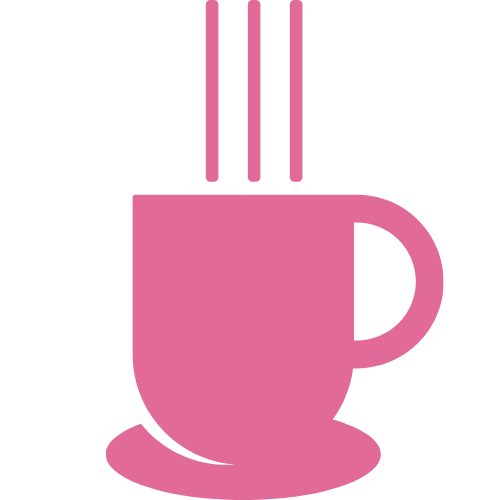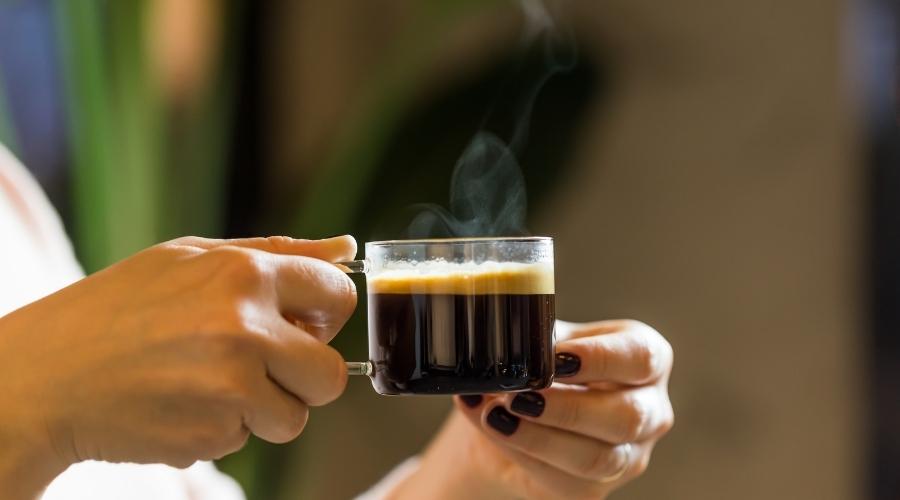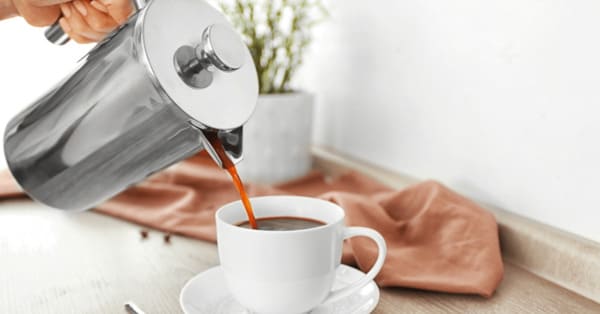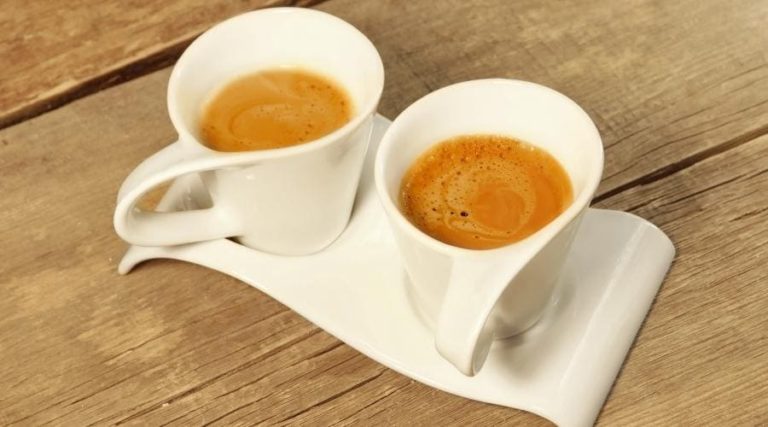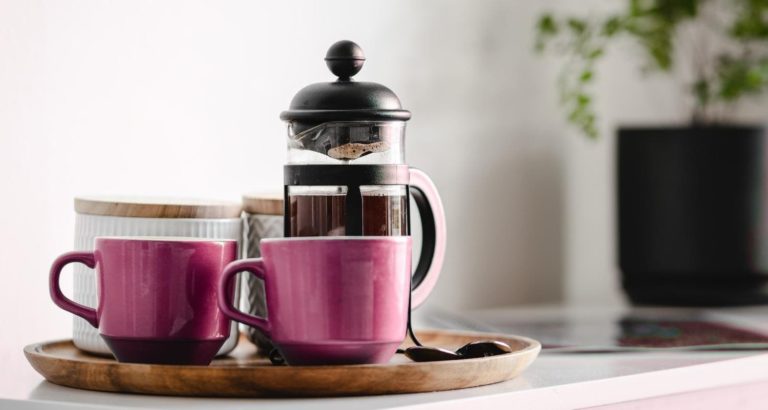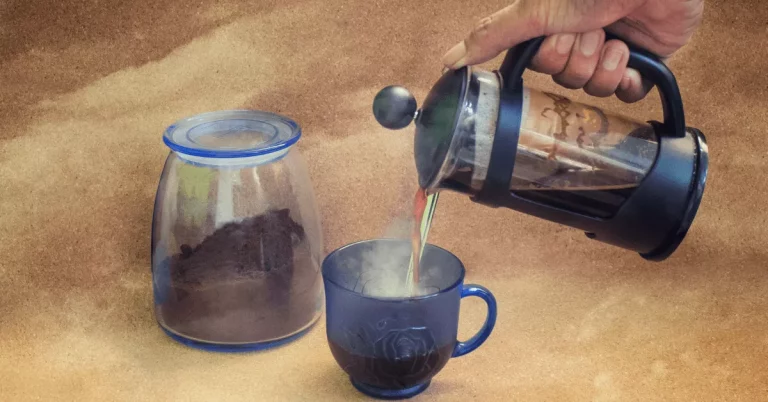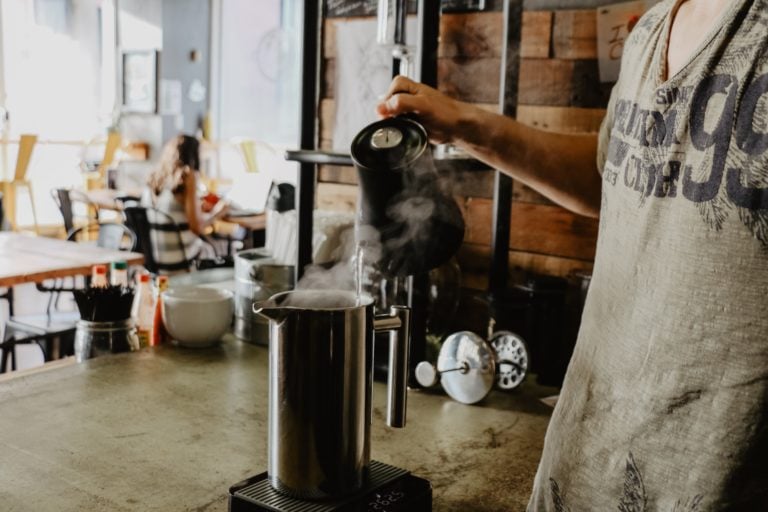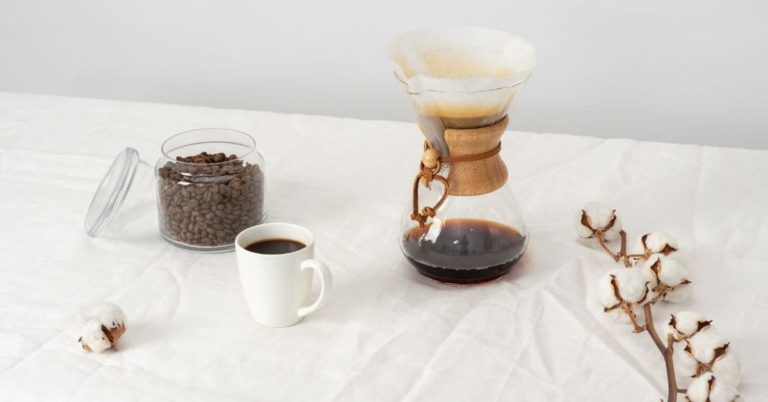Phin filter and pour-over are both brew-at-home coffee styles popular among java lovers. Each with separate histories, styles, brewing methods and flavor differences, but both are capable of delivering quite the exhilarating cup of joe. Let’s start with a brief comparison.
Phin Filter vs Pour Over — A Quick Overview
| Key Differences | Phin filter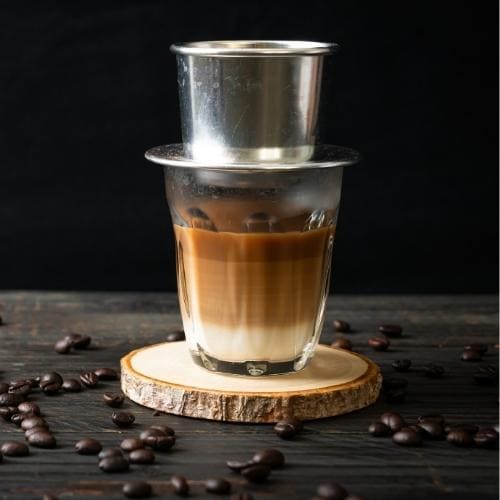 | Pour-over 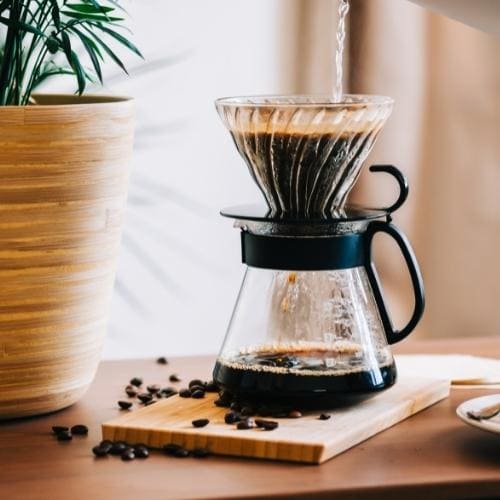 |
|---|---|---|
| Origin | Vietnam | Germany |
| Equipment | · Perforated round plate · Brewing chamber · Perforated insert · Cap | · Coffee dripper · Filter paper |
| Grind Size | Medium fine | Medium coarse |
| Variations | · Gravity insert · Screw insert | · Chemex · Hario V6 |
| Types of beans | Vietnamese coffee beans are prefered. Any other type is also fine. | Arabica coffee beans are prefered. Any other type is also fine. |
| Coffee extract | Strong and bold | clean, smooth, and silky |
| Skill level required to make it | Easy | Moderate |
| Ease of cleaning | Medium | Easy |
So, what makes these brewing methods so special? How do they differ? Which is the best?
Below, I’ve prepared a complete guide for you to understand the secrets and differences between phin filter vs pour over coffee.
Understanding Phin Filter Vs Pour Over Coffee in Depth!
Phin filter coffee brewing style originated in Vietnam and is a big part of Vietnamese coffee culture. It’s a special filter that extracts coffee in a specific way resulting in a full-bodied and bold drink.
You can use Vietnamese coffee beans or regular coffee beans in a phin filter.
Pour over is a traditional coffee brewing method that many coffee fanatics are familiar with. It involves brewing coffee using unique funnels, stands and paper filters.
Pour-over method requires a tad bit more skill to nail it but the resulting extract is much more personalized and cleaner than any other brew.
Pour-Over coffee style Explained
Pour-over coffee is a simple brewing process in which you literally pour hot water over finely ground coffee beans.
The credit for its origin goes to a German entrepreneur named Melitta Bentz, who in 1908 invented the pour-over method. Thanks to her, the coffee culture evolved, and people started to brew cleaner coffees instead of bitter and muddy ones.
So, the basics of it are simple. You have a dripper and filter paper, and the crux of this brewing method lies in the technique and timing.
Here’s how the typical pour-over brewing is done:
- Put the dripper on the cup.
- Place a paper filter in it (Or a reusable filter – Yes, it’s possible).
- Take finely ground coffee beans and fill two-thirds of the dripper. Level it up.
- Heat the water up to 200°F.
- Wet the coffee grinds with hot water and let it bloom for 30 seconds.
- After that, pour the hot water evenly at a slow pace for 1 minute and 15 seconds approximately.
- Let the coffee extract drip into the cup.
And you’ll have a clean cup of joe without any segments or sediment. I personally like it because the extract is full of nuanced flavor and aroma. The filter traps the residue and oils released by coffee beans, making it more palatable.
One thing you have to keep in mind is that the “pour time” and “grind size” have a lot of effect on the end product. That’s why a perfect brew requires a certain amount of experience and skill.
When you talk pour-over, two other terms are commonly used: Chemex and Hario V60.
Chemex is a heat resistant dripper shaped like an hourglass. If you want to make a larger serving of coffee using the pour-over method, there is no better option than Chemex.
Many people are wondering if you can use regular filters for Chemex, so I wrote a detailed answer here You can check the article you’re interested in this brewing method.
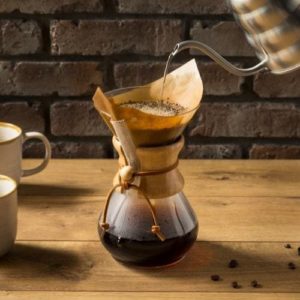
Hario V60 is a smaller gooseneck dripper with a sharp 60 degrees cone shape. You’ll find spiral ribs inside it that make water flow just right. I love the classic glass one, but it also comes in other materials.
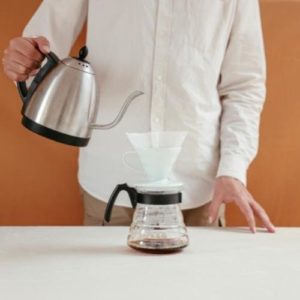
Is pour-over coffee and drip coffee the same?
Yes, they are by principle, the same method. The only difference is that the pour-over coffee is a manual process whereas the brewer has more control over temperature and pouring speed of the water, leading to a more personalized cup of joe.
However, drip coffee refers to the brew made in an electric coffee dripper. Where all the processes are automatic, and you’ll have less control over the final taste of the product.
Phin Filter coffee (aka Vietnamese coffee) style
Phin is a stainless steel filter that is used to make Vietnamese coffee. Its special design extracts the essence of coffee beans to the fullest.
It’s said that in 1857, coffee was introduced in Vietnam by a French Catholic priest. Time went by, and people experimented and perfected their coffee recipes into the exciting Vietnamese coffee culture we see today.
What’s amazing about the Phin filter is that it requires little to no effort to brew, and you can rarely go wrong with it. It has four components:
1. A perforated plate that sits on the top of the cup
2. Brewing chamber
3. A perforated insert
4. A cap to seal the chamber
Here’s how the basic phin filter brewing is done.
- Place the perforated plate and brewing chamber on the top of the cup.
- Now add finely ground coffee beans to the brewing chamber.
- Place the perforated insert, also known as the “gravity insert,” in the chamber.
- Use hot water to wet the ground and let it bloom for 30-60 seconds
- Fill the brewing chamber with hot water and wait.
- Ideally, the first dribble should start after 2 min. It’ll take 5 to 6 min to get the complete cup of coffee.
I love the phin filter because it packs a robust, strong, and complex flavor that you can’t find in any other method.
Sure, it takes longer to brew than your average joe, but the good thing is you don’t have to do anything, and gravity makes sure the extraction is even and proper.
Is Phin filter coffee similar to drip coffee?
No. A phin filter brews slow drip coffee, which is different from regular drip coffee. There are a few differences in both brewing methods.
Firstly, the phin filter brewing is a slow process, and it takes around 5-6 minutes to extract complete coffee. In contrast, the drip coffee takes about 1-2 minutes.
Secondly, the drip coffee/pour-over uses filter paper which extracts a clean and silky coffee. On the contrary, phin has a perforated base that works as a filter.
Is Phin Filter coffee the same as French Press?
No, the Phin filter and French press are different brewing methods. A French press is an immersive brewing style. It involves steeping the coffee grinds in hot water and plunging the final extract. It produces strong and full-bodied coffee.
Phin filter involves a much steady brewing using a specialized filter. It takes longer to brew but results in a stronger and bold cup of joe.
Phin Filter Gravity Vs Screw — which is better?
Phin filter has two different types of inserts, namely “gravity” and “screw” types. All the other components are the same.
Both give the coffee a distinct flavor, but coffee enthusiasts believe that a gravity insert is better than a screw one.
Gravity Insert
It’s pretty much self-explanatory. You’ll just have to place the insert onto the coffee grinds in the brewing chamber and let the gravity do the rest.
Screw Insert
A screw insert enables the brewer to fix the insert inside the brewing chamber and tighten it against the coffee bed.
Can you make Espresso with Phin?
No, making espresso with a phin filter is impossible. Espresso requires a high-pressure water stream forced through the finely ground coffee beans. The pressure is around 9 to 10 bars which are usually created by espresso machines. There is no way a phin filter can generate such a high level of pressure.
Which is stronger, Phin Filter coffee or Pour-Over coffee?
Phin filter coffee is stronger than regular pour-over coffee. The brew ratio and time of the phin filter make it bolder and stronger.
The phin filter has a 1:2 coffee to water ratio, and it takes about 5-6 minutes to complete the extract. On the other hand, the pour-over method uses 60 grams of coffee for one litter of water. This comes out to be 1:15. So, the phin coffee is super strong, although you can always dilute it to suit your taste buds.
Phin Filter Vs. Pour Over — What Grind Size to Use?
Coffee grind size is an important factor to consider, and it can make or break the brew. Each brewing method requires a different grind size.
A general rule of thumb is that the longer the coffee beans remain saturated in water, the coarser the grind should be.
For the pour-over brewing method, which has both saturation of water and dripping movement, you can use medium coarse coffee grounds, which will produce the best results.
For Hario V60, you can use medium-fine size as the water flows much faster through the dripper.
Since the phin filter is a slow drip process, it’s recommended to use very finely ground beans. This gives ample time for extraction and produces an excellent cup of coffee.
Another way to decide the grind size for phin is to look at the hole size of the perforated plate. The granule size should be larger than the holes.
The Final Verdict
To be honest, there isn’t a clear winner. I love both coffees, and each has a distinct taste that can put a smile on your face. If you want a quick, hands-on experience of brewing, then I’d recommend pour-over coffee. It’s clean, silky and has a strong aroma.
However, if you want a full-bodied joe and experience the Vietnamese coffee culture, then go for phin.
At the end of the day, there is no wrong way to brew your favourite bean juice! Experiment and see what makes you jitter.
As a matter of fact, the world of coffee has numerous brewing methods and cultures to offer. As a fortunate result, we enjoy many delicious flavors on a daily basis!
Sources:
https://bluebottlecoffee.com/brew-guides/chemex
https://www.hario.co.uk/pages/brew-guides-v60-expert
